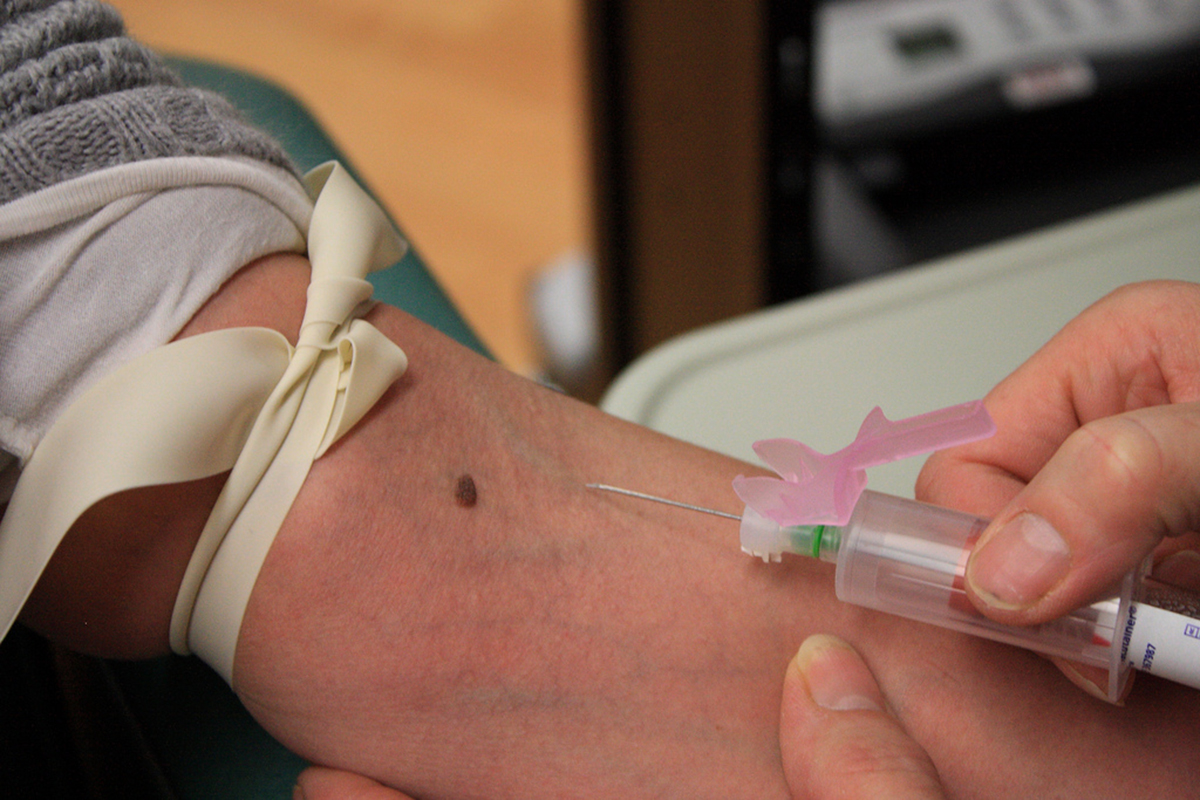Porphyrias are a group of extremely rare disorders which affect the skin or nervous system, resulting in severe abdominal discomfort. Porphyria disorders are generally inherited, which means they are the result of genetic abnormalities passed from a parent to a child. When someone has porphyria, cells do not convert body chemicals known as polyphorins into heme, which is what gives blood its red color.

What Is Heme?
The human body manufactures heme in the liver and red blood cells.
If the body has difficulties making heme, it is the result of any of these eight enzymes being at a low level or deficient. Porphyrins and porphyrin precursors of heme will buildup in the human body and as a result, a person can become very ill.
How Are Different Porphyrias Classified?
Porphyrias are classified in different systems. The most accurate classification for a specific type of porphyria is due to the specific enzyme deficiency. Another way to classify porphyrias is to look at the symptoms each one causes, neurological symptoms are caused by acute porphyrias, while those that cause photosensitivity are of the cutaneous variety. Lastly, the third way to classify a specific type of porphyria is using a system based on whether the excess precursors originate from the liver or in the bone marrow. Some types of porphyrias are classified as being one or more of these specific categories.
Porphyria: How Common Is It?
According to US National Library of Medicine, the exact number of porphyria cases is unknown. However, estimates put it at 1 in 500 or possibly as high as 1 in 50,000 people worldwide. Overall, cutaneous porphyria is the most common type of all cases diagnosed. For some types of porphyria, the exact prevalence is not known because many individuals with a genetic mutation associated with the disease with remain asymptomatic throughout their life.
Different Genes Related to Porphyria
- ALAD: Aminolevulinate dehydratase, responsible for instructing manufacture of the delta-aminolevulinate dehydratase.
- ALAS2: Aminolevulinate, delta-, synthase 2. The ALAS2 gene is responsible for instructing the manufacture of the 5-aminolevulinate synthase 2 or erythroid ALA-synthase.
- CPOX: Coproporphyrinogen oxidase, provides instructions for the manufacture of the coproporphyrinogen oxidase enzyme.
- FECH: Ferrochelatase, the gene provides instructions on making the ferrochelatase enzyme.
- HFE: Hemochromatosis, the gene provides instructions for producing a protein located on the surface of cells located in the liver and intestines.
- HMBS: Hydroxymethylbilane synthase, the gene provides instructions for the making of the hydroxmethylbilane synthase.
- PPOX: Protoporphyrinogen oxidase, the gene provides instructions for manufacturing protoporphrinogen oxidate enzymes.
- UROD: Uroporphyrinogen decarboxylase, responsible for the instructions needed to make the enzyme known as uroporphyrinogen.
- UROS: Uroporphyrinogen III synthase, provides instructions on the manufacture of the enzyme called uroporphyrinogen III synthase.
Types Of Porphyrias
There are several different types of porphyrias. There are four types of hepatic porphyrias and these include; doss porphyria (ALA) dehydratase deficiency, acute intermittent porphyria (AIP) porphyria cutanea tarda (PCT), and hereditary coproporphyria (HCP).
See Also: The 16 Most Common Genetic Diseases
Finally, there is variegated porphyria (VP), which is a mixed type of porphyria and transient erthyoporphyria (EEP).
Role Of Genetics In Porphyria
Some types of porphyria are inherited through an autosomal dominant gene pattern. An autosomal dominant gene pattern means one copy of the gene in each cell has mutated. This single gene mutation brings an increase in the risk of developing the signs and symptoms of porphyria, because it causes a reduced activity of an enzyme necessary for heme production.

Signs And Symptoms Of Porphyria
The type of signs or symptoms a person will experience with porphyria will depend on what type it is. Some types of porphyria will cause the skin to be sensitive to the sunlight. In cases of cutaneous porphyria, when the skin is exposed to sunlight, it will cause blisters, redness and sometimes the skin will become scarred.
Other types of porphyria affect the nervous system and some of these symptoms will result in:
- Chest and abdominal pain
- Seizures
- Muscle weakness
- Emotional and mental disorders
- Sensitivity to light
- Confusion
- Nausea and vomiting
- Hallucinations
- Constipation
- Urinary retention
- Confusion
The symptoms of acute porphyria often have a rapid onset and may last for a matter of days or even weeks. Some porphyrias will result in a combination of acute symptoms and symptoms that manifest in the skin.
Environmental Triggers
A number of different environmental factors may bring on the signs and symptoms of porphyria and these include:
- Dieting and/or fasting
- Alcohol
- Smoking
- Stress
- Sunlight exposure
- Certain types of drugs
- Hormones
Porphyria: Diagnostic Tests
To receive an accurate diagnosis of porphyria, a person's stool, blood and/or urine may be tested, particularly at or near the times the symptoms are triggered. Diagnosing porphyria can be very hard because the range of symptoms can often be similar to many different disorders and the way tests results are interpreted. A large portion of tests are available for porphyria, but the results from an independent laboratory are not always accurate.
Porphyria: Treatment
The specific type of porphyria a person has will dictate the type of treatment protocols used. Often, empirical treatment is needed if the clinician suspects a porphyria, because acute attacks can require hospitalization and may even be fatal. Medications such as Hematin and heme arginate are the drugs of choice for treating porphyria in America and the U.K. If drugs are used for treating an attack of porphyria, they need to be administered early in the attack to be most effective.
The pain associated with porphyria can be very severe, frequently it is out of proportion to the physical signs. In response to the pain a person may be experiencing, a physician may prescribe opiate medications. Because porphyria is often accompanied with seizures and most seizure medications only exacerbate the disease, treatment can be very complicated.
People who suffer from neurological and psychiatric problems related to porphyria may require different treatment options. Pain management is done through long-acting opiate medications such as morphine.
Other psychiatric symptoms associated with porphyria include; anxiety, insomnia, restlessness, mania, delusions, confusion, catatonia and psychosis.
Cutaneous porphyria results in itching, burning, swelling and possible blistering of the skin when a person is exposed to bright sunlight. To treat the symptoms of cutaneous porphyria a person is required to avoid bright, direct sunlight and to use sunscreen and SPF-rated hats, long sleeved shirts, bandanas and gloves.
See Also: Abdominal Swelling - What Could It Be
Porphyria: Future And Prognosis
There are many clinical trials researching porphyria going on in the United States. If a person has porphyria it is a good idea to wear a medical ID bracelet or necklace, in order to alert medical personnel, in the event there is an emergency. The prognosis for porphyria will depend on the type of medical treatment and lifestyle modifications a person follows. More genetic and scientific research is needed to identify better treatment options and to determine how to best manage the symptoms of each of the different porphyrias.
- Photo courtesy of Lorenkerns via Flickr: www.flickr.com/photos/lorenkerns/8372853725
- Photo courtesy of Wheeler Cowperthwaite via Flickr: www.flickr.com/photos/wcowperthwaite/5774694766


Your thoughts on this